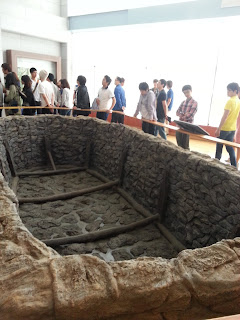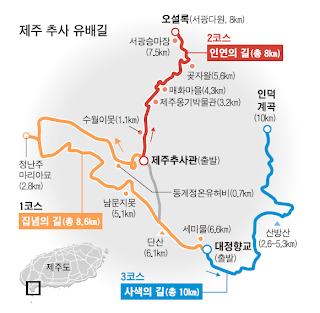National Museum of Korean Contemporary History
National Museum of Korean Contemporary History, opened in the winter of 2012, is right across from the Gyeongbokgung Palace in Seoul.
Its premises belonged to Ministry of Culture, Sports and Tourism
before the museum was established.
As a recently-built museum, it is very clean and well-designed.
Especially, Presidential Room, where visitors can sit on the chair, exhibits its geographical advantage well.
Please, look at the following picture.
Through scenery from the window, visitors can see the Blue House(Korean presidential palace) behind the Gyeongbokgung Palace at the foot of Mt.Inwangsan
The museum covers Korean history from 1876 to the present day.
1876 was the year that the first modern international treaty for Joseon was signed with Japan, then Joseon gradually headed for a downfall.
Republic of Korea(South Korea) was established in 1948 after the liberation of 1945.
That was not an easy-going compromise,
there had been a number of terrorism -sometimes resulted in slaughters of innocent people, for example, April Third Incident - between left and right wings since the liberation.
If you like to learn more about this period, I'd like to recommend you look the webtoon titled 'Operation Chromite' (http://comics.nate.com/webtoon/detail.php?btno=55715)
This webtoon, focused on an ordinary family, has been published online and gained popularity from internet users.
Its cartoonist, Yoon Taeho, attained fame with previous webtoon titled 'Misaeng', which also converted into a movie afterwards.
Personally speaking, I was born in 1986.
The year I was born was the last period of Jeon Doowhuan who was the last dictator of South Korea.
There was an immense nationwide protest against his dictatorship throughout June of the following year(6월항쟁, 六月抗爭)
It is probably impossible for me to imagine how my parents endured that time.
They were a poor newly-wed in their late twenties, and had two babies to bring up.
Meanwhile, I am the very beneficiary of the miracle of Han River.
In 1988 when I was three, South Korea held the Seoul Olympic.
Industrialization that had been driven by the government since 1960s just started to get reward back to Koreans.
My generation was at the end of governmental oppression.
When I was in the lower grades in elementary school,
I did something like a mass game that was similar to that of the present North Korea
and also had to gather up in the school ground every monday morning in order to listen to principal's speech.
On the other hand, we were a generation of new flow.
Unlike our previous generation, we didn't pay attention to the ideology, right or left.
I am class of 05, we elected the first student representative who had no political preference and that was shock to our seniors.
In short, we were the first generation that derailed dichotomy whether right or left.
However, that didn't mean we made head against the existing rule.
We were more familiar with capital than ideology and politics.
That's the reason why we were the first students who accepted franchise stores on campus with no repulsion.
The museum is currently holding a special exhibition on Korean War(1950-1953)

the course of the Korean War
documents as a result of armistice agreement of Korean War
replicas are available for visitors to read
the inside of the special exhibition
the document of armistice agreement contains five representatives' autographs.
However, there were no name from South Korea,
since Korean army was controlled by the US at those times.
That's why the Korean War is called a proxy war.
Even though Koreans have made numerous errors in our contemporary history,
democratization and economic development have been substantially achieved.
Still has a long way to go...
So many open sores are left behind our rapid economic and political developments.


.jpg)




















































